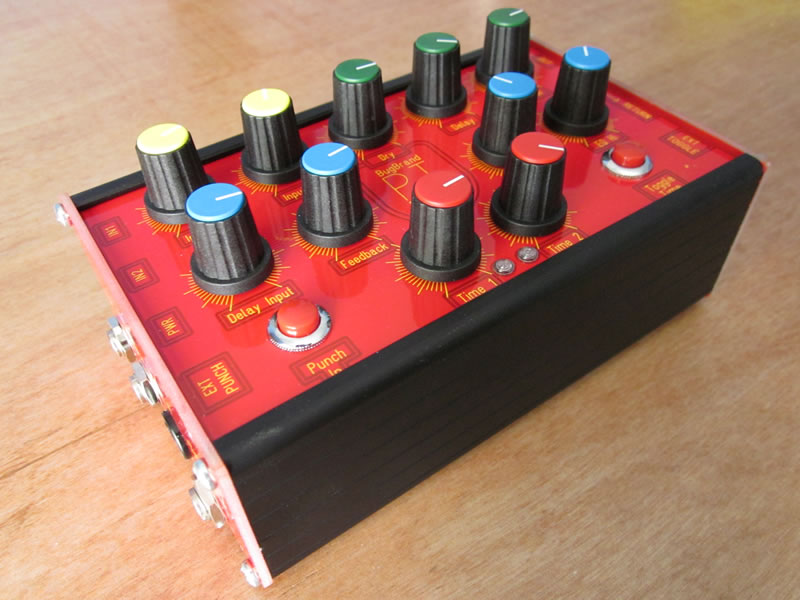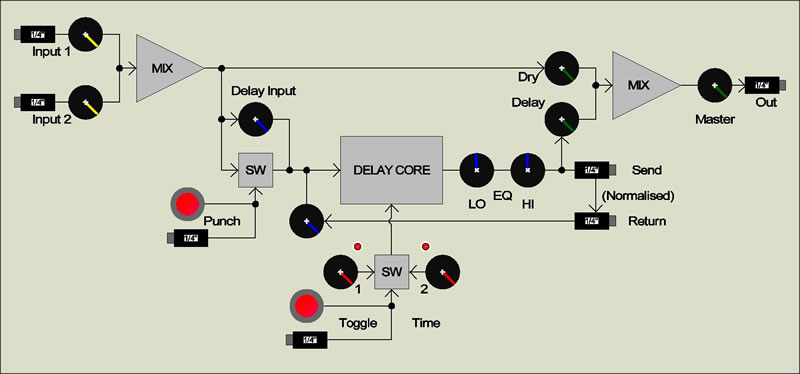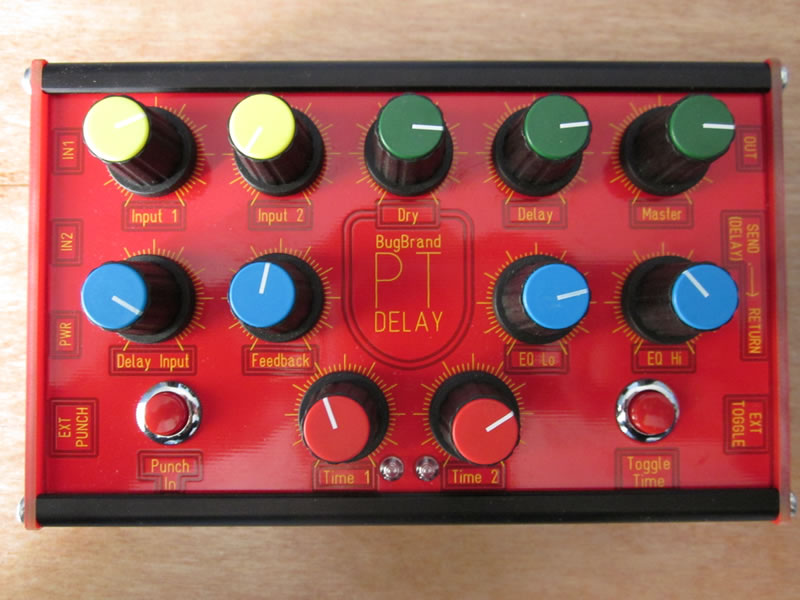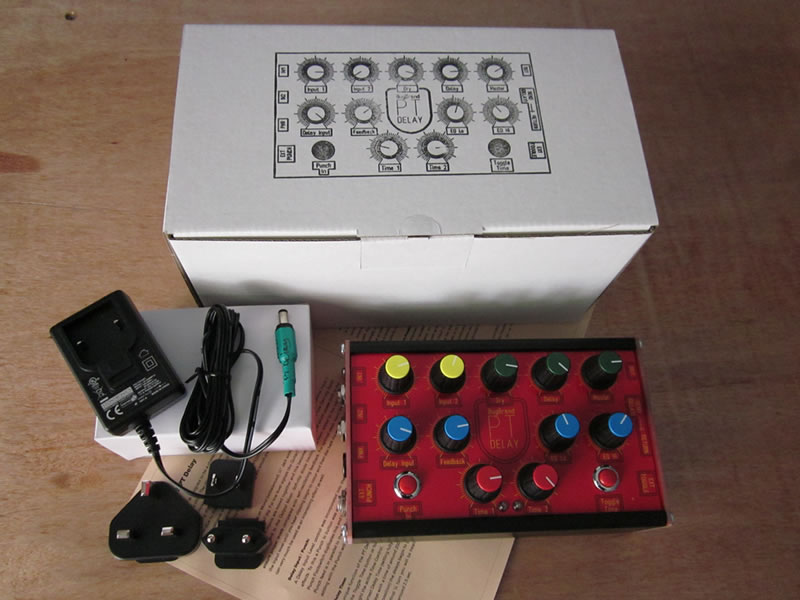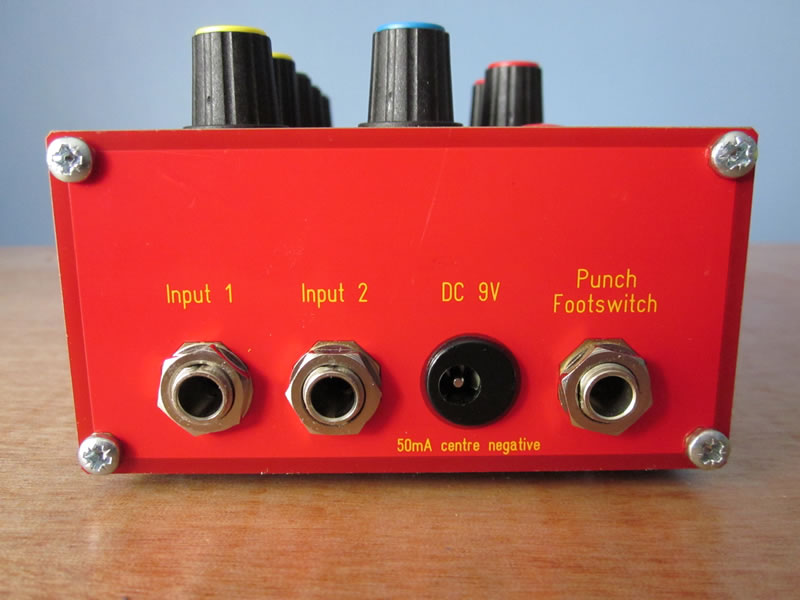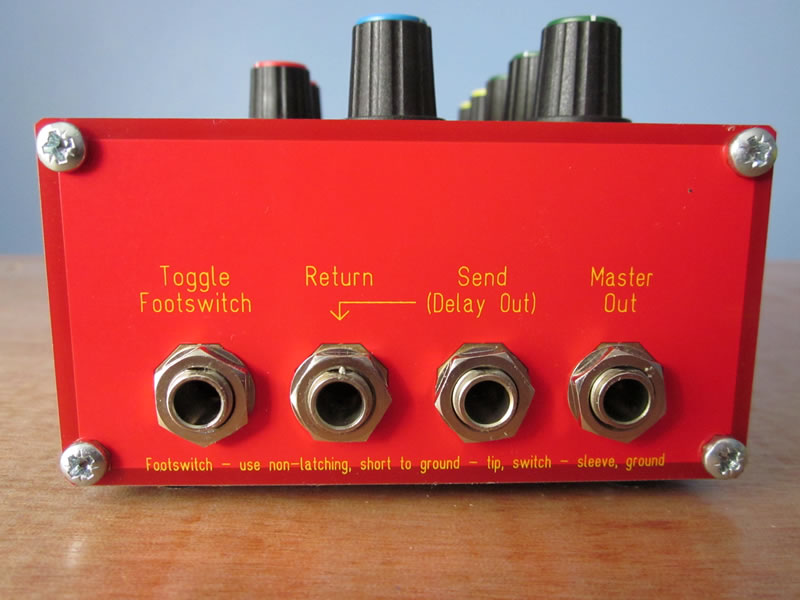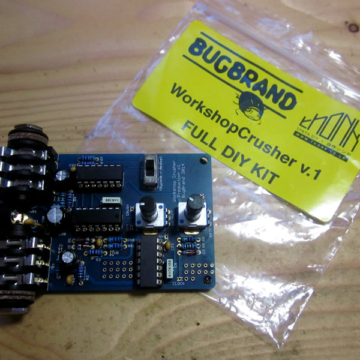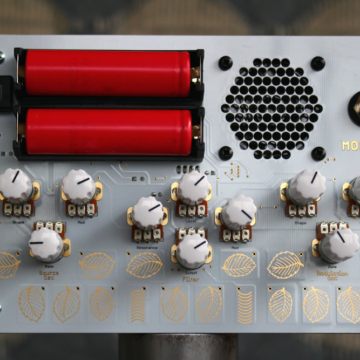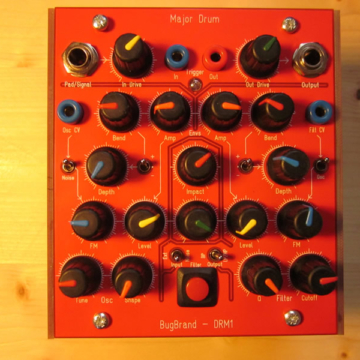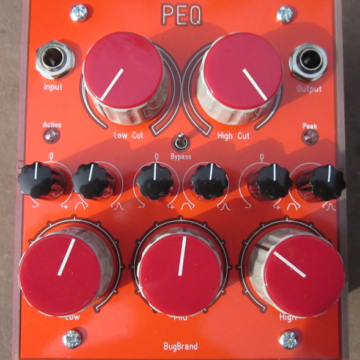Description
**SOLD OUT – 6 batches sold through 2011 – this was the first PT Delay release, now well developed onwards into the PT Delay Standard**
I designed this based on chatting with Trish Keenan (RIP) of Broadcast when they came to play the Cube Cinema – one of their last live shows 🙁
The PT Delay is a supremely characterful and hands-on Delay Effects Processor based around the PT2399 Digital Delay chip. Yes, this is centred around a digital chip, but all the supporting circuitry is pure analogue and has been tweaked to give extremely satisfying and versatile sonic results. I have been working with the PT2399 chip for several years now (inc. the PRC1 PT Delay Module) and this is the culmination of my works.
The PT-chip was only ever designed to give delays up to around 350mS but
it is now well known that ‘under-clocking’ it (ie slowing it ..way..
down) can make it spit out wonderfully gnarly results. The design here
now has a range of delay times from under 100mS down to around 2.5 Sec, with anything over around 500mS becoming increasingly noisy.
But it is really the extra features built in that set this design apart – the unique Toggle Time settings, Punch In for dub effects, powerful EQ shaping and carefully tweaked soft-clipping, make this unlike any other Delay box out there. Granted, it is not your traditional ‘clean’ delay and there are no clever micro-processors for things like Tap-Tempo, but if you are looking for something with a unique quirky character which demands to be tweaked then I believe you will not be disappointed.
Check the Block Diagram above to see the internal structure of the PT Delay.
The top row of dials is dedicated to Input & Output Mixing:
- First are two Inputs (Yellow Knobs) – the first is High Gain for low level signals such as guitar, while the second is Low Gain more suited to higher leverl signals such as synths. The two Inputs are mixed together and become the Dry signal which passes to the Delay Core and the Output Mix.
The Input Mix features diode soft-clipping to ensure proper levels compared with the Delay’s self-oscillating feedback – this can, of course, be used creatively to overdrive inputs. - The Output Mix (Green Knobs) features independent Level controls for Dry (through) and Delay signals before a final Master output level control. I made a conscious design decision not to include a bypass switch.
The middle row of dials (Blue Knobs) are the main controls around the Delay Core:
- A Delay Input level control was added with dub-style effects in mind – by adjusting the control you can let only certain bursts of sound into the Delay Core. The Punch In button works in tandem with the Input control letting through sound only when pressed so you can turn down the main Input control and then play the Punch button.
- The Feedback control adjusts how much of the delayed signal is passed back to the delay input, thus controlling how many repeats you get – from a single delay up to self-oscillation. Further diode soft-clipping is added around the Delay Core so that the signal won’t ‘run away’ into digital clipping when oscillating, instead taken on a nicely saturated tone.
- The two Cut/Boost Peaking EQs follow the Delay Core and allow great sound altering potential, especially when Feedback is turned up. Repeats can become increasingly bassy (turn down Hi EQ) or increasingly trebley (turn down Lo EQ). Both controls should be set initially to a central position (no effect) and from there they will boost frequencies if turned clockwise or cut if turned anti-clockwise.
The bottom two dials (Red Knobs) control the Delay Time:
- Two independent Delay Times can be set with the Time 1 & 2 knobs and then you can switch between settings using the unique Toggle Time button (an LED glows to show which Time setting is active). Both dials have the same response with the first half-turn focused on short delays from 65mS to 200mS (middle position). The second half-turn takes the delays down into more noisy realms with delays over 500mS (roughly 2 o’clock position becoming increasingly distorted down to a maximum of around 2.5 Sec. The response of the Time knobs is not very linear because I decided that wide time variety was of more importance. Interesting pitch shift effects can be achieved when toggling and by careful setting you can achieve perfect octave jumps (see demo video).
Both buttons (Punch In and Toggle Time) can be controlled by external footswitches if desired – the footswitches duplicate the button functions and both can be used simultaneously.
The Feedback path features normalised Send/Return jacks so that external effects can be inserted into the chain – two alternative methods are detailed in the PDF manual. The Send jack socket can also be used as a pure Delay Output.
Tech Specs:
Input / Output – Mono (unbalanced) 1/4″ Jack
Footswitches – 1/4″ Momentary Short-to-ground (eg. Keyboard Sustain Pedal) – Tip = Switch / Sleeve = Ground
Power – 12V DC @ 50mA, centre negative, 2.1mm connector, polarity and over-current protected. Worldwide (100-240VAC) Wallwart supplied with interchangeable plug heads. Note that early production models state 9VDC on the ends whereas this should say 12V!
The PT Delay is enclosed in a metal case roughly 17 x 10 x 7 cm. The front and end panels are made of PCB material with Red Soldermask and Yellow Silk-screen.
PDF Instructions (200kB)
The PT Delay is covered by a 2 year Warranty.
Thanks to Richard Quirk, Dan Preece and Daren Ager for helping with a bit of beta testing!

